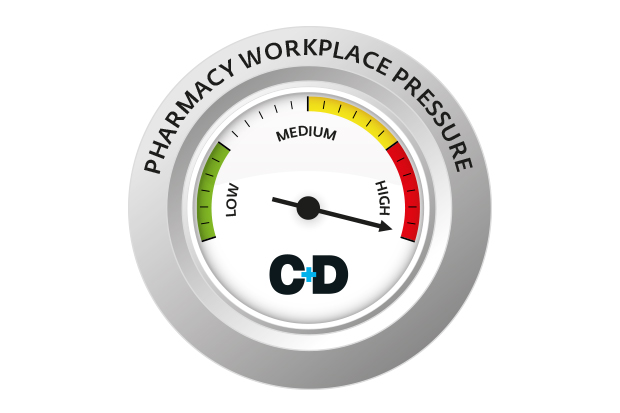Pharmacy staff shortages contributing to patient safety incidents
Staff shortages and time pressures are being reflected in the number of patient safety incidents reported in pharmacies, the National Pharmacy Association (NPA) has said.
The number of reports citing “work and environment factors” as the main contributor rose by 2% in the three months to December – compared with July-September – accounting for 47% of all patient safety incidents, the NPA revealed in its latest medication safety officer (MSO) report last month (January 31).
The NPA attributed the rise to “workload, distractions and time pressures due to staff shortages and the pharmacist trying to undertake all tasks themselves and not delegating to other pharmacy staff where appropriate”.
NPA director of pharmacy Leyla Hannbeck said 21% of the patient safety incidents citing “work and environment factors” were due to staff shortages.
The lack of staff meant the pharmacist was forced to carry out the dispensing process themselves, and of the reports submitted in the three months to December, 21% involved a pharmacist self-checking, including the clinical and accuracy check, the NPA added.
Nearly a quarter (22%) of these self-checking incidents involved the wrong strength of medicine being dispensed.
“Without specific guidance on self-checking from the General Pharmaceutical Council, only do so as a last resort,” Ms Hannbeck advised.
Look-alike, sound-alike errors
The two most common errors reported were “wrong drug/medicine”, accounting for 29% of all patient safety incidents, and dispensing the wrong strength, accounting for 25%.
For the October-December report, superintendents could for the first time select “look-alike, sound-alike factors” as a contributor to incidents where the wrong drug was dispensed, to coincide with the new quality payment criteria on patient safety reporting.
Similar looking and/or sounding medicines contributed to 22% of patient safety incidents, with the most commonly mistaken medicines being amlodipine and amitriptyline, and gabapentin and pregabalin, the NPA said.
In “a rare, but serious” look-alike, sound-alike incident, a child received olanzapine orodispersible tablets instead of omeprazole dispersible tablets. “The patient was admitted to hospital after displaying signs of drowsiness following ingestion of three tablets,” the NPA noted.
Short-dated stock
In one incident Ms Hannbeck highlighted, a pharmacy received a handwritten hospital prescription for four bottles of Travatan eye drops to be administered over a four-week treatment period. At the time of dispensing, the short-dated eye drops were in-date; however, two bottles expired halfway through the treatment.
“When the pharmacist re-ordered the bottles to rectify the error, they received another set of very short-dated stock,” Ms Hannbeck explained.
“Always check when dispensing short-dated stock and ensure it will not expire before the end of the treatment period,” and “always ensure date checking is completed…at least every three months”, the NPA advised.
Where did the errors originate?
The majority of all incident reports – 58% – continue to involve no harm to the patient, while 30% were reported as “near misses”. In the remaining incidents of “low” (10%) and “moderate” (3%) degree of harm, patients experienced side effects, but not permanent harm, the NPA said.
While 96% of incidents originated from the pharmacy, 3% were due to prescribing errors, “most of which were following patient discharge from hospitals”, it said.
An error by both a prescriber and a pharmacist resulted in “severe harm” being caused to one patient.
“A patient with a severe allergy to penicillin was prescribed and dispensed Augmentin tablets 625mg (co-amoxiclav) for a chest infection. Although the allergy was recorded on the patient's medication record, it was unusual that no individual highlighted this,” the NPA said.
“The patient took four tablets and started to develop a skin rash. The error was picked up by the pharmacist – as the patient was concerned – and was referred back to the prescriber.”
What is C+D doing about pharmacy pressures?

C+D created a briefing document, which was passed to England’s chief pharmaceutical officer Keith Ridge by the Royal Pharmaceutical Society last month to persuade him of the damage stress is causing to community pharmacy. Download the document, and read C+D’s in-depth coverage of the data.
Let C+D know about your own experiences of stress by emailing [email protected]. Please state if you prefer your comments to remain anonymous.





Has your pharmacy struggled with staff shortages?